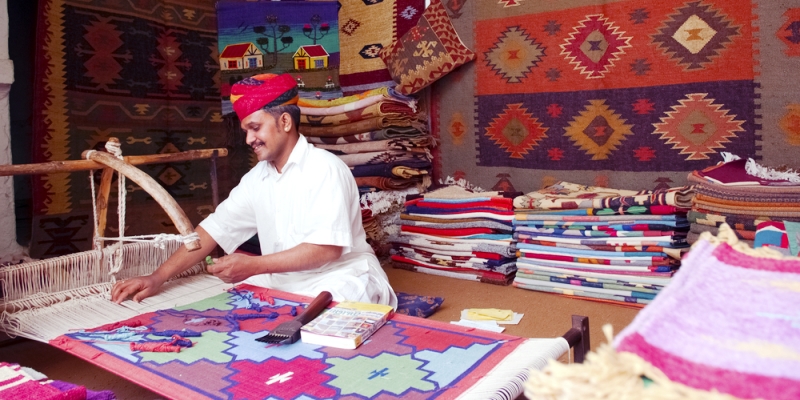After ‘Selfie with beti’, we now have India’s ‘beti‘ taking the selfie. Smriti Irani the Union minister for textiles has been posting pictures of her Bihari silk and ‘kanjeevarams’ in her latest campaign, #IWearHandloom, to promote Indian handloom and textile industry. While the campaign grabbed a lot of eyeballs with eminent personalities, both men and women, posting their pictures wearing the fabric, Newsd feels that Irani has more holes to repair than gloss over with cosmetic changes.
I support Indian weavers, here’s my #IWearHandloom look – Handwoven Silk from Bihar. Share your look & tag 5 people pic.twitter.com/1NOuueJ0mS
— Smriti Z Irani (@smritiirani) August 1, 2016
The textile industry is in deep crisis and the following problems need Irani’s urgent attention more than the ‘selfie’ campaign.
India’s largest source of direct and indirect employment (105 million), the textile industry, faces stiff competition from foreign products and witnesses fluctuations in prices of raw materials. The recent hike in cotton prices, lurch in production, farmers not finding cotton harvesting profitable and lack of accurate data on cotton production are the major hindrances in growth of this industry.
- Falling exports and employment rates in the textiles and apparels industry is another area of concern. As employment rates fell by 0.11% in April-June 2015, though seeing a steady increase by 0.18% in July-September 2015 and 0.23% in October-December 2015, this data was collected by Labour Bureau estimates.
- Exports of cotton commodities amount for 24% of the entire textile and apparel industry, and export rates have declined by 34% in the last three years according to data from United Nations Commodity Trade Statistics Database (UN Comtrade).
- Stiff competition from international markets and declining export rates are another sore point. Textile and apparel exports from India declined more than 7% between 2013-14 and 2015-16. Recent crop damages in Punjab and Haryana along with low rainfall in Gujarat and Maharashtra have lowered the annual cotton output in five years pushing up prices and making Indian textile products even more uncompetitive in the international market.
- Bangladesh and Vietnam are our toughest competitors and India is slowly losing the lead it earlier had over them. Vietnam is part of the Trans-Pacific Partnership, a trade bloc and enjoys duty-free access to international markets, but India is not a member of the TPP group.
- Sluggish government schemes and trouble in tracking the productivity of such schemes needs attention too. Numerous schemes are launched by the government and their rampant failure to boost low productivity needs to be addressed. Some of these programmes include the Technology Upgradation Fund Scheme and Integrated Skill Development Scheme.
- Dominance of informal sectors with low worker productivity is another major issue. Better organizational structures and establishment of formal structures are needed with more focus on skill development, according to National Skill Development Corporation Report.
- . The much-awaited National Textile Policy is due to be cleared soon. She needs to implement the Rs 6,000 crore package announced by the Centre for the textiles industry. The special aid will help create 1 crore jobs in three years.
So while promoting handloom using social media is welcome, lots more needs to be done and we are eagerly awaiting the minister’s plans.


















